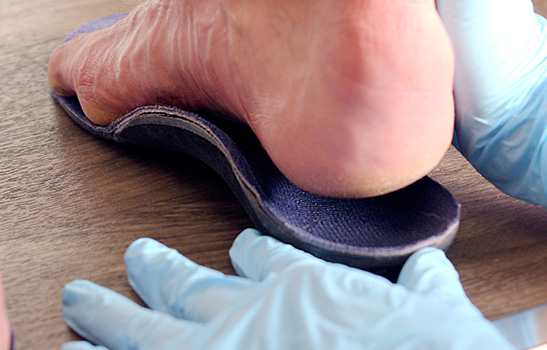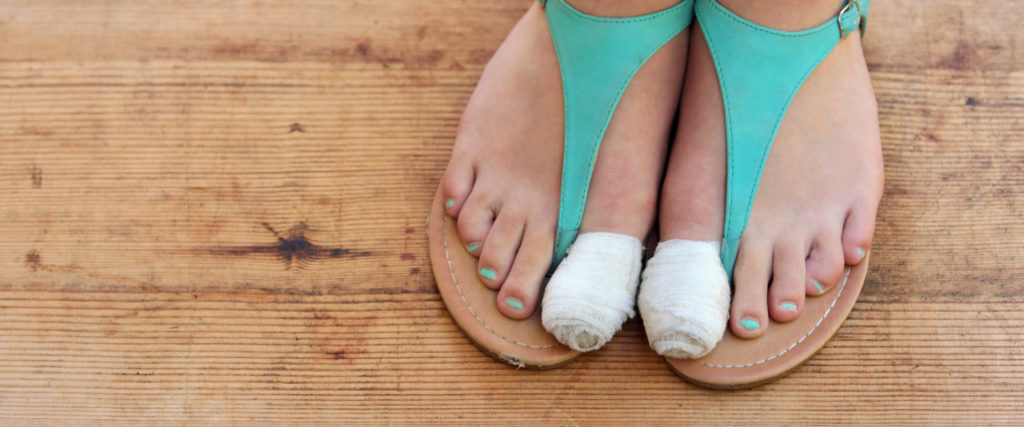Nail fungus
also known as onychomycosis. Onych means “nail” and myco means fungus.
Nail fungus is often painless, but the condition can make your nails thicken and become deformed and discolored. The fungus is contagious and can spread to other nails and skin. It’s very common, affecting 14% to 18% of the general population and 48% of seniors.
See the causes See the long term complications See how to relieve yourself at home
Signs and symptoms of nail fungus
Advanced cases of onychomycosis are easy to identify through a visual assessment. These signs are caused by fungus actually feeding on the nail.
Initially, the tip of the nail becomes unattached. As the infection gets worse, the signs become more apparent:
- increased nail detachment
- thickening
- discoloration (white, yellow, brown and/or black)
- brittleness (broken nails)
- debris accumulation under nails
- unpleasant odour
- skin changes on affected foot
Nail fungus is often painless, but patients may feel discomfort due to nail deformity (thickening, curving)
The most frequent concern is embarrassment. Patients with nail fungus don’t feel comfortable showing their feet in public.
What are the causes of nail fungus or onychomycosis?
Most cases of onychomycosis are caused by microscopic fungi called dermatophytes. However, certain types of yeast and mould can also infect your nails.
How do you get a nail fungus infection?
- Nail trauma: If your nail becomes detached, it makes it easier for fungus to get in
- Walking barefoot in public places (change rooms, pools, hotels): This exposes you to fungus
- Cross-contamination: For example, during a pedicure in which poorly sterilized instruments or contaminated nail polish is used
- Sharing your nail clipper or other instruments with an infected family member
- Having athlete’s foot (skin fungus): The fungus can spread to your nails
Progression and impact of nail fungus
- The infection can spread to the entire nail
- When the nail matrix (root) becomes infected, the nail becomes hard to treat and can be permanently damaged
- The infected nail acts as a reservoir of fungi, which can spread to your other nails or skin (causing athlete’s foot)
- In high-risk individuals, athlete’s foot can become further infected by bacteria and cause a serious infection
- The infection can spread to other members of your household
How to treat nail fungus at home
- It is important to keep your nails short and thin to prevent discomfort.
- Many natural and over-the-counter treatments are advertised as treatments for nail fungus infections. Unfortunately, none contain medication that is proven effective for eliminating fungus. However, they can help improve the appearance of your nails and maybe slow the spread of the fungus.
How to diagnose nail fungus
Several nail conditions look similar to nail fungus (see “What if it’s not nail fungus?”). That’s why it’s important for a health professional like your podiatrist to take samples and run tests before prescribing a treatment.
What can my podiatrist do about nail fungus?
Nail fungus can become a real problem because it is hard to control.
There are only two treatment options: topical treatment (medication applied directly to the nails) and oral treatment (pills). Since each of these options works differently, it’s a good idea to combine them. Before choosing a treatment plan, your podiatrist will consider:
- How advanced the infection is (Is the nail matrix affected or not?)
- How long have you had the infection?
- What treatments have you already tried?
- What is your overall health condition and what medications do you take?
In all cases, the nail must be trimmed, cleaned and thinned. Since toenails grow slowly, it may take several months to see any improvement, regardless of which treatment option you choose.
1. Medicated nail polish :
Antifungal ointments and creams are ineffective for treating nail fungus. They are designed for use on skin and cannot penetrate your nails. Just one type of nail fungus can be treated with cream: superficial white onychomycosis.
Penlac and Jublia are prescription medications that target fungal infections of the nails. These topical medications are suitable for minor infections affecting the tips of your toenails only. Patients must patiently stick to the treatment if they want to see results. They must also care for their nails on a daily basis for several months.
2. Antifungal oral medication :
Lamisil and Sporanox are oral medications used to treat more severe nail fungus infections, especially in cases where the nail bed is affected. This medication must be taken daily or at prescribed intervals for 3 to 6 months. The medication travels through your blood to the nail bed. Since nails, like hair, don’t have blood circulating in them, these treatments work especially if the nail matrix is infected.
Also, oral medications can cause side effects, including liver damage, heartburn, changed taste perception, nausea and vomiting. For that reason, oral antifungal medications aren’t suitable for everyone. Patients should see their family physician for a full check-up and blood test to check liver function before and during the treatment.
How to prevent nail fungus
- Treat athlete’s foot before it spreads to your nails
- Wear socks and closed footwear
- Let damp footwear dry out and use disinfectant sprays to keep them clean
- Keep nails short and clean
- Do not remove cuticles
- Avoid salon pedicures
- Wash and dry your feet with care, especially between the toes
If I don’t treat my nail fungus, the fungus could spread to my blood!

The dermatophyes (fungi) that infect nails need oxygen, warmth, moisture, darkness and, of course, food. Since they feed off keratin (the protein in skin and nails), they can only live in your skin and nails. That’s why they can’t spread to the inside of your body. But, keep in mind they can infect the skin of any part of your body!
What if it’s not onychomycosis or nail fungus?
Other nail problems that look like fungus:
- Psoriasis
- Eczema
- Lichen planus
- Dystrophy due to direct nail trauma
- Thickening due to repeated micro traumas
- Subungual hematoma (blood under the toenail)
- Subungual warts
- Subungual exostoses
- Congenital misalignment of the nails
- Deformed toenails due to systemic illness (anaemia, scleroderma, thyroid disorders, lung disease, etc.)
- Side effects of chemotherapy
- Moles or skin tumors under the nail
*Important! All of these conditions can damage your nails and make it easier for fungus to get in. This increases your risk of fungal infection!
Onychomycosis is a common problem and since it is often painless, it is often ignored and left untreated. If you suspect that you might have nail fungus, it’s important to have your feet examined right away, before the condition progresses and becomes more difficult to treat. Diagnosis should be done by a health care practitioner who can make sure it’s not a more serious condition that looks like nail fungus. After assessing your condition, your health care practitioner can recommend the right treatment plan.


